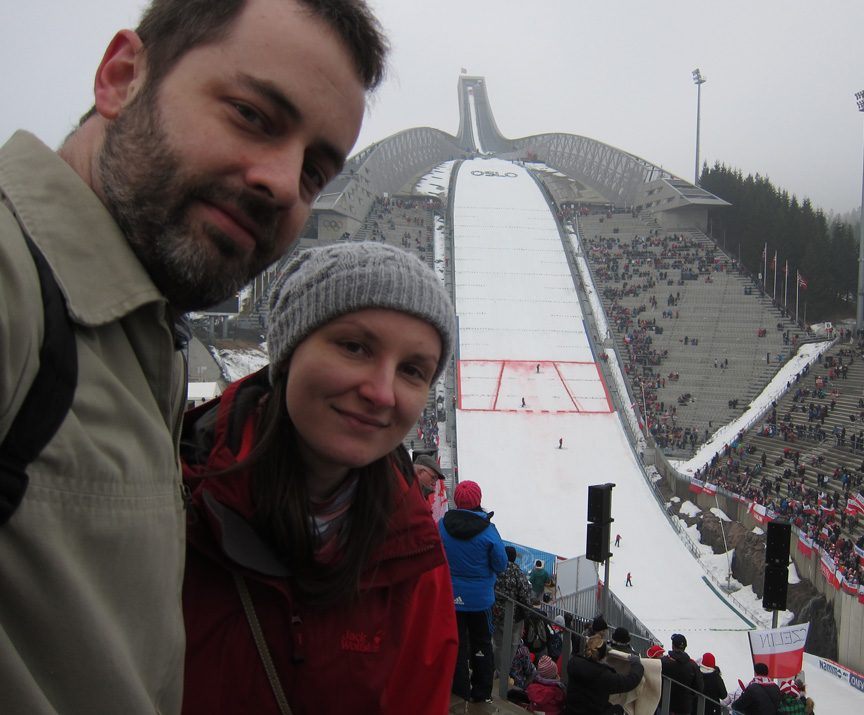I’ve been working on a 40x50cm oil painting of Krakow, Poland the past couple weeks. At first I wanted to do a demo video, but I soon realized that it would be too long and not as effective as process digitals at key points in construction. For this painting I’ve opted to use a multiple layer underpainting with a heavily altered palette.rn
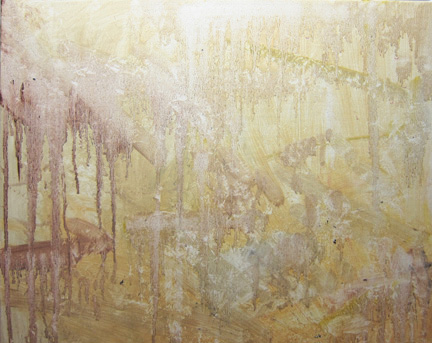
Rough warm underpainting using: Cad Yellow, Burnt Umber, Cad Orange, Cad Red, and Naples Yellow.rn
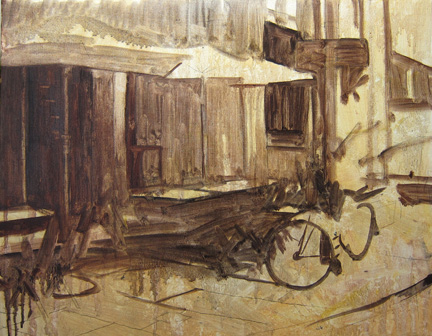
Roughing in Forms with Burnt Umberrn
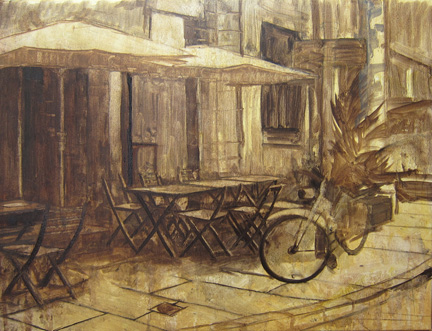
More forms in and subtracting paint from halftones with thinner on brush and paper towel.rn
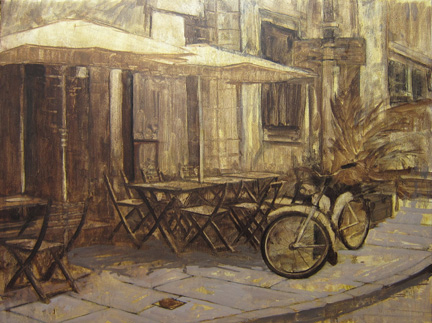
With very thin paint building some overlaying color. I washed and dribbled thinner on this and that during this process to created a deep and interesting underpainting.rn
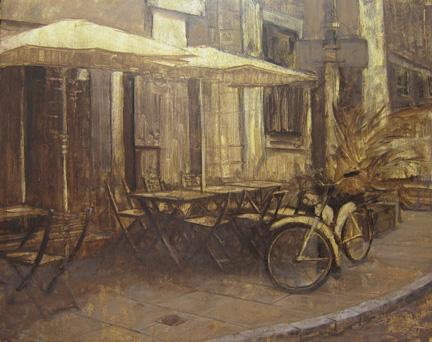
Some more washing in of color. Notice I lost some of the chair and shadow forms – I’ll clean this up later. I did it this way as I had to get the chair forms in to be able to build correct values in and out of the major forms.rn
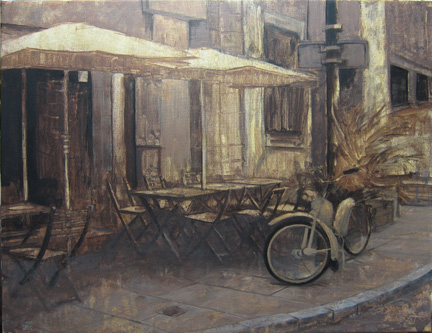
Added a mid value color and starting to build some details. With the overall painting I want to have details in the bike, street sign, plant, a couple chairs, table top, umbrella, and a couple cracks on the ground. rn
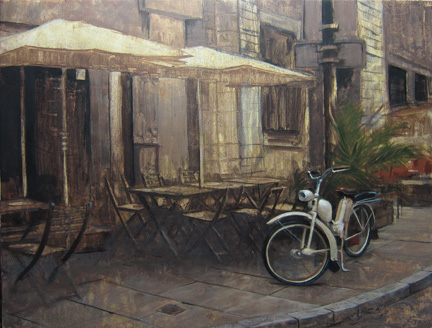
Some slight color in the plant forms, chairs in background area, and strong bike details done.rnrnStay tuned for the next half over the next couple weeks.
Combined post: (second part below)
It took another couple days of solid work, but I’ve finished this Polish urban scene I’ve been wanting to get out ever since visiting Cracow in September of 2010. On this trip in 2010 we decided to check out the old Jewish quarter (Kazimierz) and visit some the the Synagogues, Cemeteries, and old town areas. Kazimierz is located on the south side of Crakow and its Jewish roots go back to the 13th century. After WWII the area was left unkempt, but in the past 25 years or so there has been a solid movement to revive the religion, culture, and architecture. This painting is my experience from that trip. The last digital below can be clicked to expand for better detail.rn
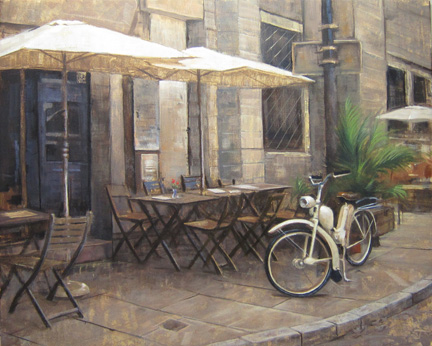
Major forms get their final paint, details decided on and painted, small corrections done to help composition
rn
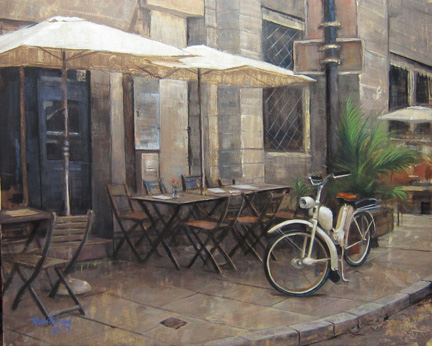
The painting is finished here; its 40x50cm and is titled, Cafe in the Jewish Quarter of Krakow (2014). It is for sale at the Argosy Gallery in Bar Harbor Maine.
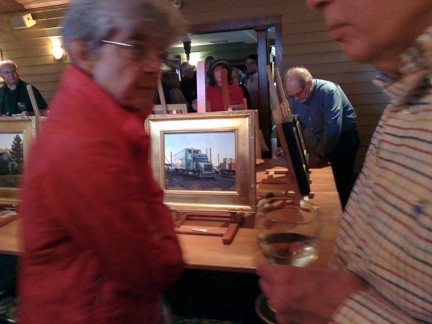
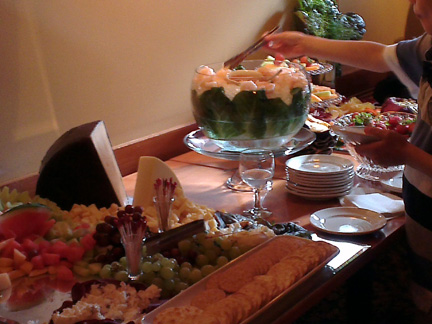
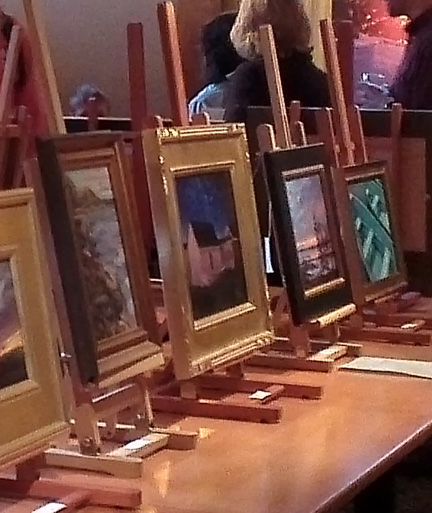
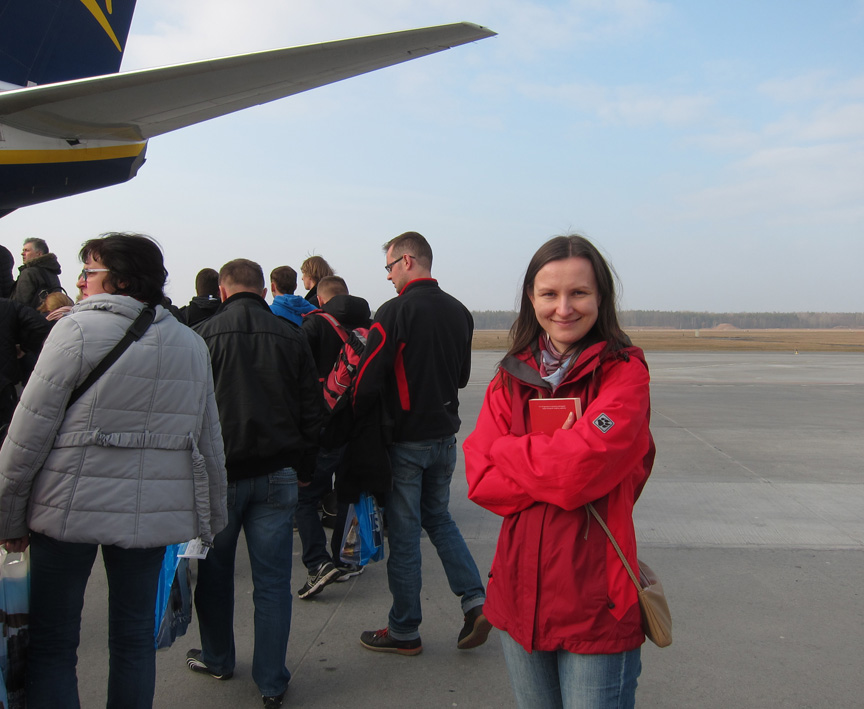 Boarding Ryanair flight out of Warsawrn
Boarding Ryanair flight out of Warsawrn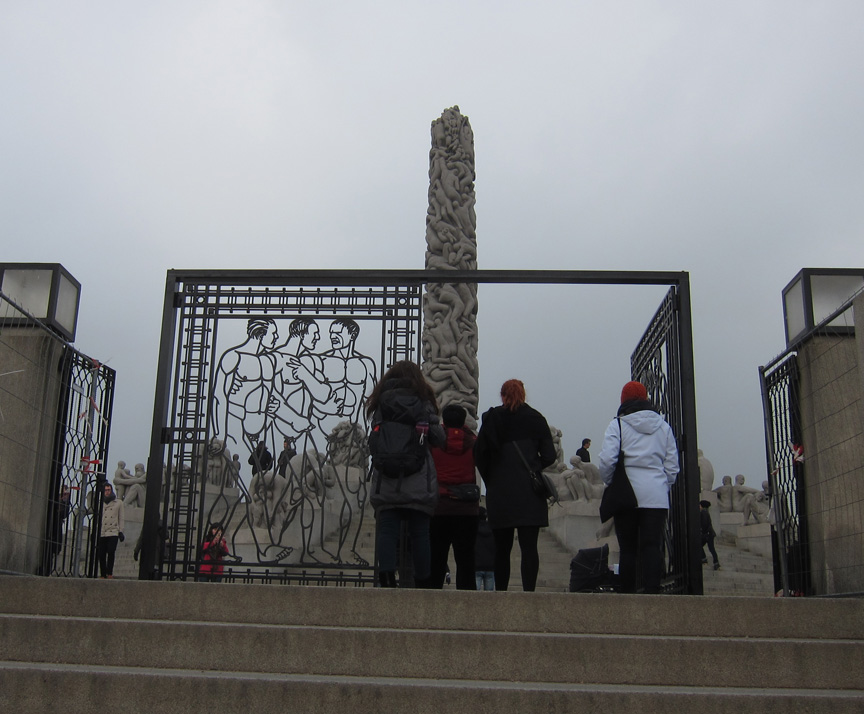 The Vigelandsparken Sculpture Parkrn
The Vigelandsparken Sculpture Parkrn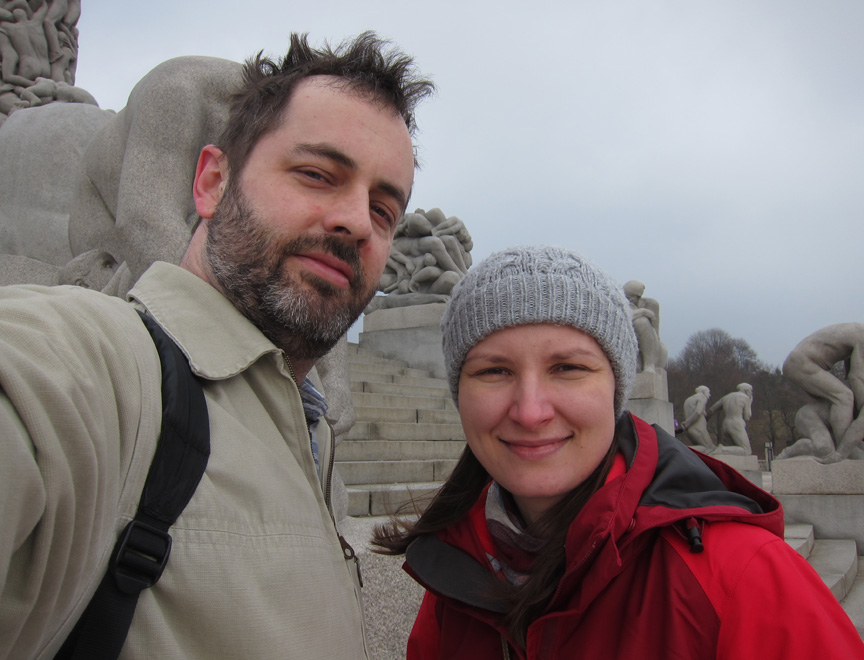 rn
rn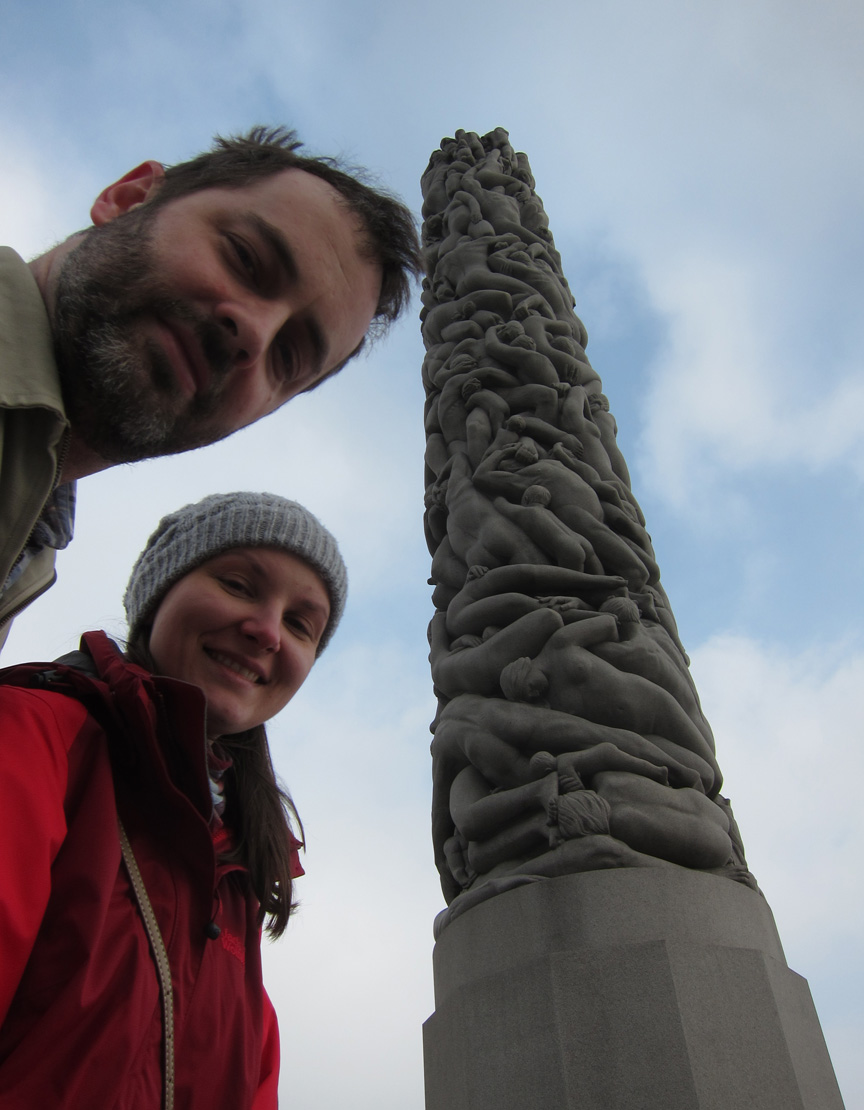 rn
rn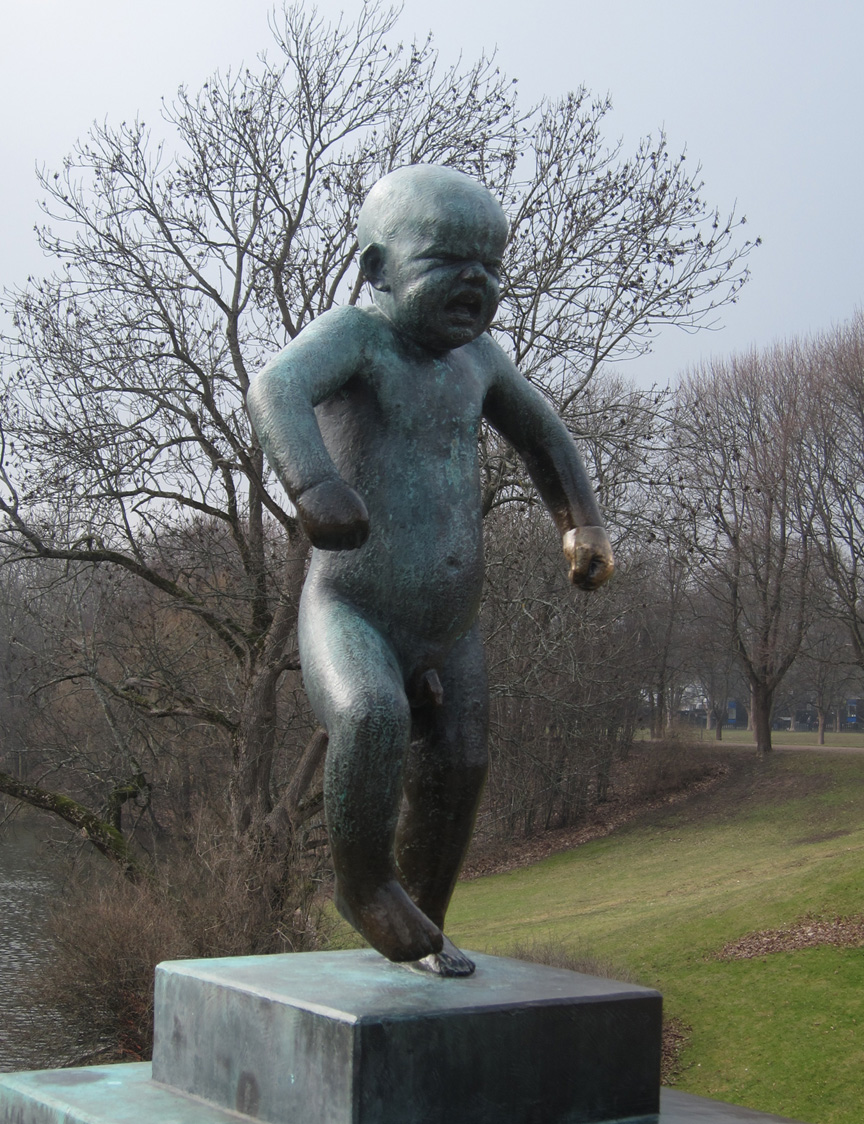 rn
rn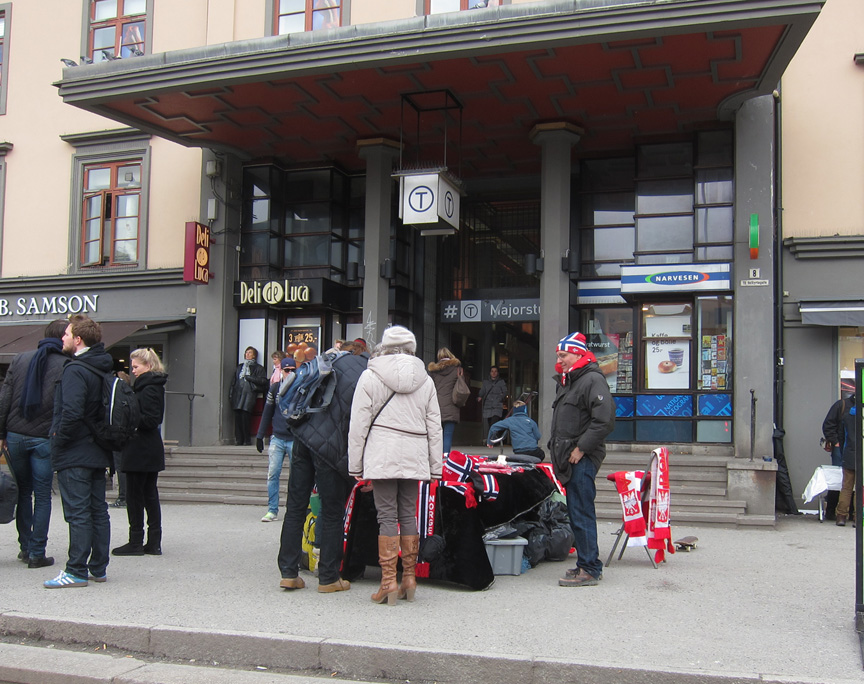 Street vendor in Norway selling Norwegian and Polish thingsrn
Street vendor in Norway selling Norwegian and Polish thingsrn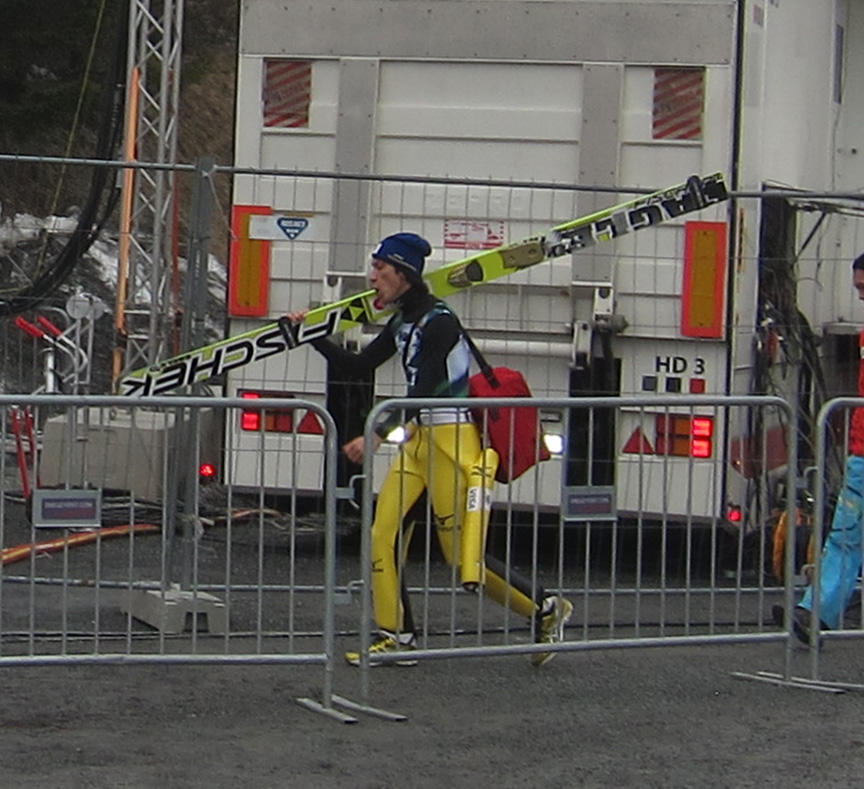 Noriaki Kasai; olympic silver medalist. Not pictured: Kamil Stoch and Peter Prevc.rn
Noriaki Kasai; olympic silver medalist. Not pictured: Kamil Stoch and Peter Prevc.rn